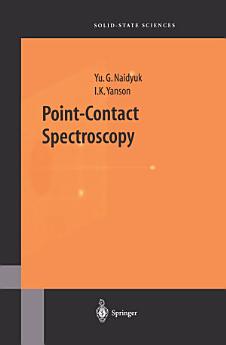Point-Contact Spectroscopy
Yu.G. Naidyuk · I.K. Yanson
2019年4月 · Springer Series in Solid-State Sciences 145 巻 · Springer
電子書籍
297
ページ
report評価とレビューは確認済みではありません 詳細
この電子書籍について
The main goal of solid-state physics is investigation of the properties of the matter including the mechanical, electrical, optical, magnetic, and so on with the aim of developing new materials with defined characteristics. Nowadays, the synthesis of superconductors with high critical temperature it consists of or fabrication of new heterostructures on the base of semiconductors, in cre ation of layered, amorphous, organic, or nanofabricated structures and many others. To do all of these, the various methods of investigation are developed during the past. Because it is impossible to find an universal method to in vestigate a variety of materials, which are either conducting or insulating, crystalline or amorphous, thin-layered or bulk, magnetic or segnetoelectric, and so on, various kind of spectroscopies, like optical, neutron, electron, tun nel and so on, are widely used in solid-state physics. Recently, a new type of spectroscopy, namely, the Point-Contact Spectroscopy (PCS), was designed for study of the conduction-electron interaction mechanism with a whole class of elementary excitations in the solids. In PCS, a small constriction, about a few nanometers large, between two conductors plays a role of a spectrome ter. Namely, because of inelastic scattering of accelerated electrons, the I - V characteristic of such a tiny metallic contact is nonlinear versus an applied voltage and its second derivative surprisingly turns out to be proportional to the electron-quasiparticle-interaction spectrum.
著者について
Both authors are affiliated with the B. Verkin Institute for Low Temperatire Physics and Engineering, National Academy of Sciences of Ukraine.
この電子書籍を評価する
ご感想をお聞かせください。
読書情報
スマートフォンとタブレット
Android や iPad / iPhone 用の Google Play ブックス アプリをインストールしてください。このアプリがアカウントと自動的に同期するため、どこでもオンラインやオフラインで読むことができます。
ノートパソコンとデスクトップ パソコン
Google Play で購入したオーディブックは、パソコンのウェブブラウザで再生できます。
電子書籍リーダーなどのデバイス
Kobo 電子書籍リーダーなどの E Ink デバイスで読むには、ファイルをダウンロードしてデバイスに転送する必要があります。サポートされている電子書籍リーダーにファイルを転送する方法について詳しくは、ヘルプセンターをご覧ください。







